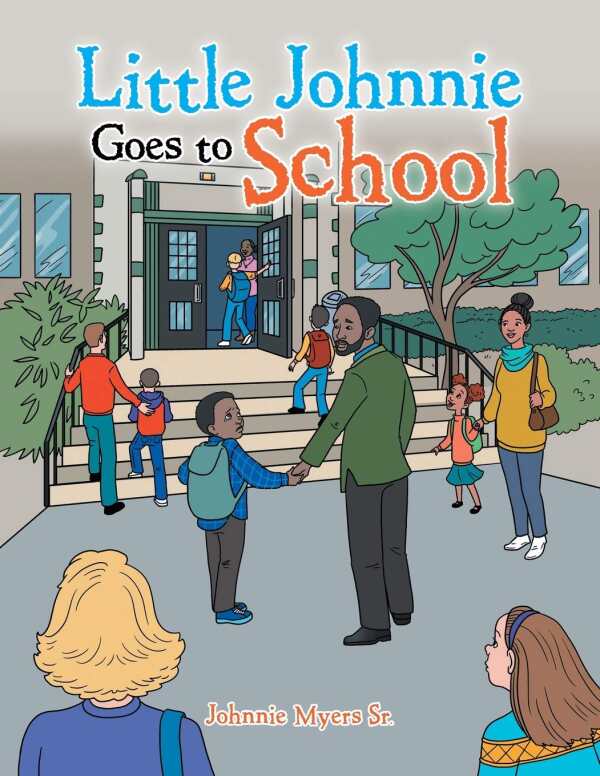Little Johnnie Goes to School
Little Johnnie Goes to School is a useful teaching tool related to children who are scared of school.
In Johnnie Myers Sr.’s picture book Little Johnnie Goes to School, children cope with the conflicts of going to school for the first time.
It’s Johnnie’s first day of school, but he doesn’t want to go. He’s scared that his father will leave him just like his mother did some time ago. When he gets to school, he finds some comfort in his friendly teacher, his cubby, and his name tag, though a cot makes him wonder if he’ll have to sleep overnight at school.
Rather than playing games with the other children, Johnnie wants nothing to do with his classmates. He waits for his father by the door. When his father comes to get him, he’s greeted with a big hug. The book ends with a series of helpful guides for children, parents, and teachers to help children who’re struggling like Johnnie.
Johnnie’s struggles are realistic, and as a lead character he’s expressive, though the emphasis on his concerns becomes repetitive. His abilities to express his thoughts, and the book’s insights into his feelings, make this a great, empathetic learning tool, one that acknowledges that everyone struggles and it’s okay to do so. However, the book’s ending is abrupt, without a sense of whether Johnnie will learn to enjoy school and trust that his father won’t leave him. Further, before the book ends, its narrative is interrupted by questions directed at the audience; the point-of-view shift is confusing.
Johnnie’s emotions are clear in the illustrations, though the images are otherwise dimensionless. They depict a classroom filled with students and toys; Johnnie, his father, and the teacher are consistent in their presentations, as are most of the supporting characters and situations. The text is highlighted behind the illustrations and is harder to read against lighter backgrounds.
Little Johnnie Goes to School is a useful teaching tool related to children who are scared of school, opening conversations into how best to succeed in the classroom.
Reviewed by
Rebecca Monterusso
Disclosure: This article is not an endorsement, but a review. The publisher of this book provided free copies of the book and paid a small fee to have their book reviewed by a professional reviewer. Foreword Reviews and Clarion Reviews make no guarantee that the publisher will receive a positive review. Foreword Magazine, Inc. is disclosing this in accordance with the Federal Trade Commission’s 16 CFR, Part 255.

